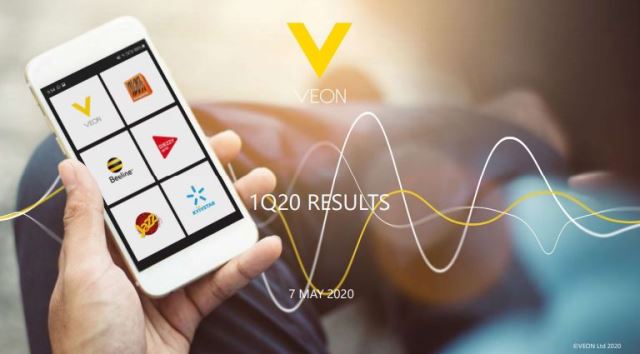Veon said Capex excluding licenses increased to $492 million in Q2 2020 from $450 million in Q2 2019, mainly due to its 4G network investment program.

The ratio of Capex (excluding licenses and capitalized leases) to revenue for the last twelve months was 20.8 percent.
Veon said reported revenue decreased 16.3 percent to $1.9 billion, negatively impacted by special compensation of $38 million received in 2Q19. The decline is a result of currency headwinds and the negative impact of lockdowns in all Veon markets.
Veon’s mobile subscribers declined to 205 million at the end of the second quarter as a result of lockdown measures in operations where it shut down up to 90 percent of retail points-of-sale for a short period.
Beeline Russia’s Capex was flat, leading to a LTM capex intensity ratio of 25.5 percent. Beeline invested in network development with a strong separate focus on Moscow and St. Petersburg.
In Moscow, 4G population coverage reached 99.4 percent during 2Q20 alongside the start of 5G-ready deployment and boosting network deployment in the Moscow metro area.
Kyivstar’s Capex increased 53.4 percent as a result of a focus on further 4G roll-out during the quarter, which achieved 4G population coverage of 81 percent.
Kyivstar and Vodafone signed a memorandum on mobile network sharing accelerate the deployment of 4G networks in rural areas and on highways.
Kyivstar’s mobile subscriber base decreased 3.1 percent to 25.4 million, reflecting the lower gross additions as a result of lockdown measures including the partial closure of Kyivstar stores in Ukraine. Kyivstar’s 4G subscriber base penetration increased to 31 percent, with total 4G customers at 7.8 million, representing a significant increase of 52 percent.
Jazz Pakistan’s subscriber base increased 5.6 percent to 62.8 million supported by multiple sales channel initiatives during the lockdown and lower churn.
Capex of Jazz Pakistan increased to PKR 14.3 billion, mainly due to 4G capacity expansions and network roll out. The population coverage of Jazz’s data network was more than 62 percent.
Beeline Uzbekistan’s customer base declined 18.2 percent to 7.1 million impacted by higher churn, primarily among customers with irregular mobile spending. Capex increased to UZS 232 billion as it invested in high speed data network, improving 4G population coverage to 34 percent vs 26 percent in Q1 2020.
Beeline Kazakhstan’s Capex decreased 46.8 percent as a result of a significant increase in spending for rollout in Q2 2019 after the termination of a network sharing agreement with Kcell.
Djezzy Algeria’s 4G services covered 41 wilayas and approximately 44 percent of Algeria’s population, while its 3G network covered all 48 wilayas and approximately 75 percent of Algeria’s population.
Capex of Djezzy fell 11.8 percent to DZD 3.1 billion due to delayed network equipment delivery as a result of new local regulations on shipment terms and other Covid-19 related impacts.
Banglalink’s revenue fell 3.9 percent, although data revenue posted 30.3 percent growth as Banglalink continued monetizing its investments in 4G capacity and focusing on selected digital services. Its enhanced 4G network was a significant enabler of the 79.2 percent increase in data usage.
The user base of the Banglalink self-care app increased 58 percent in Q2 2020 as compared to Q1 2020. Banglalink’s video streaming app Toffee achieved 62 percent growth in its user numbers.
Banglalink’s subscriber base fell 2.5 percent despite a focus on customer acquisition. Data customer base rose 3.3 percent due to simplified product offers and continued expansion of 4G network coverage.
Banglalink’s Capex was BDT 1.9 billion, reflecting a front-loading of network investments to support 4G expansion. Its 3G network population coverage was approximately 74 percent while 4G population coverage was 52 percent.





